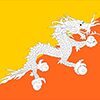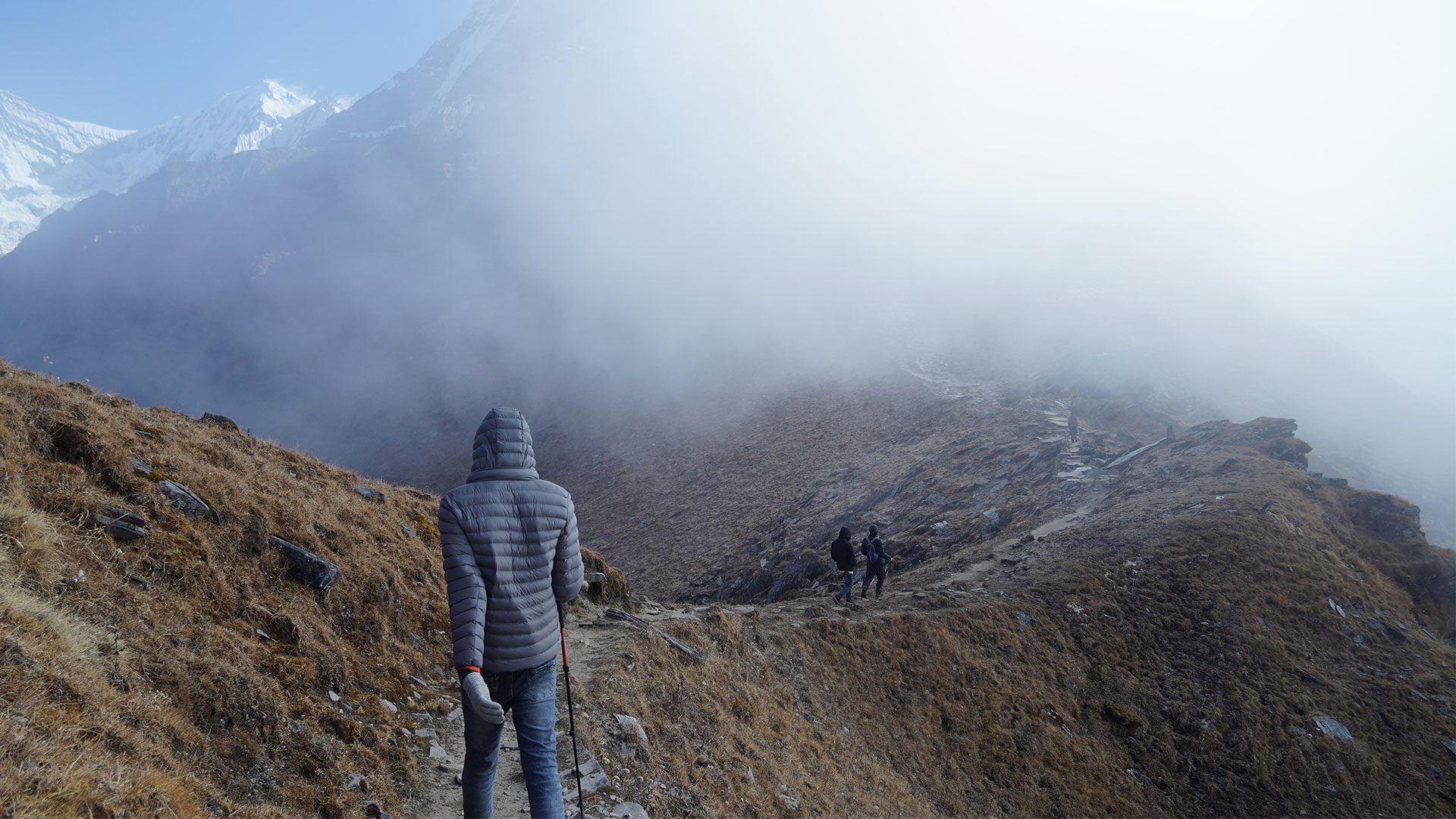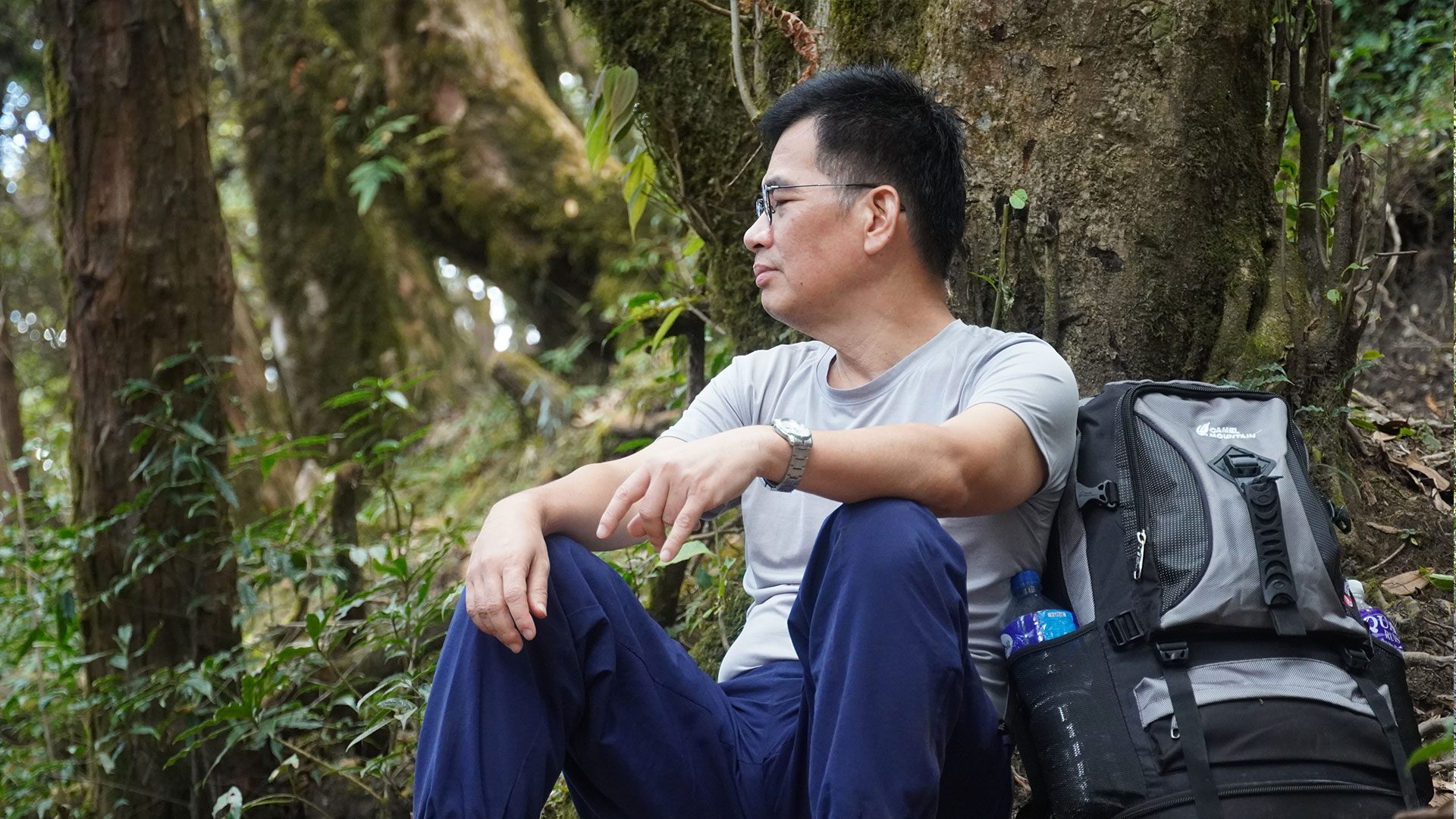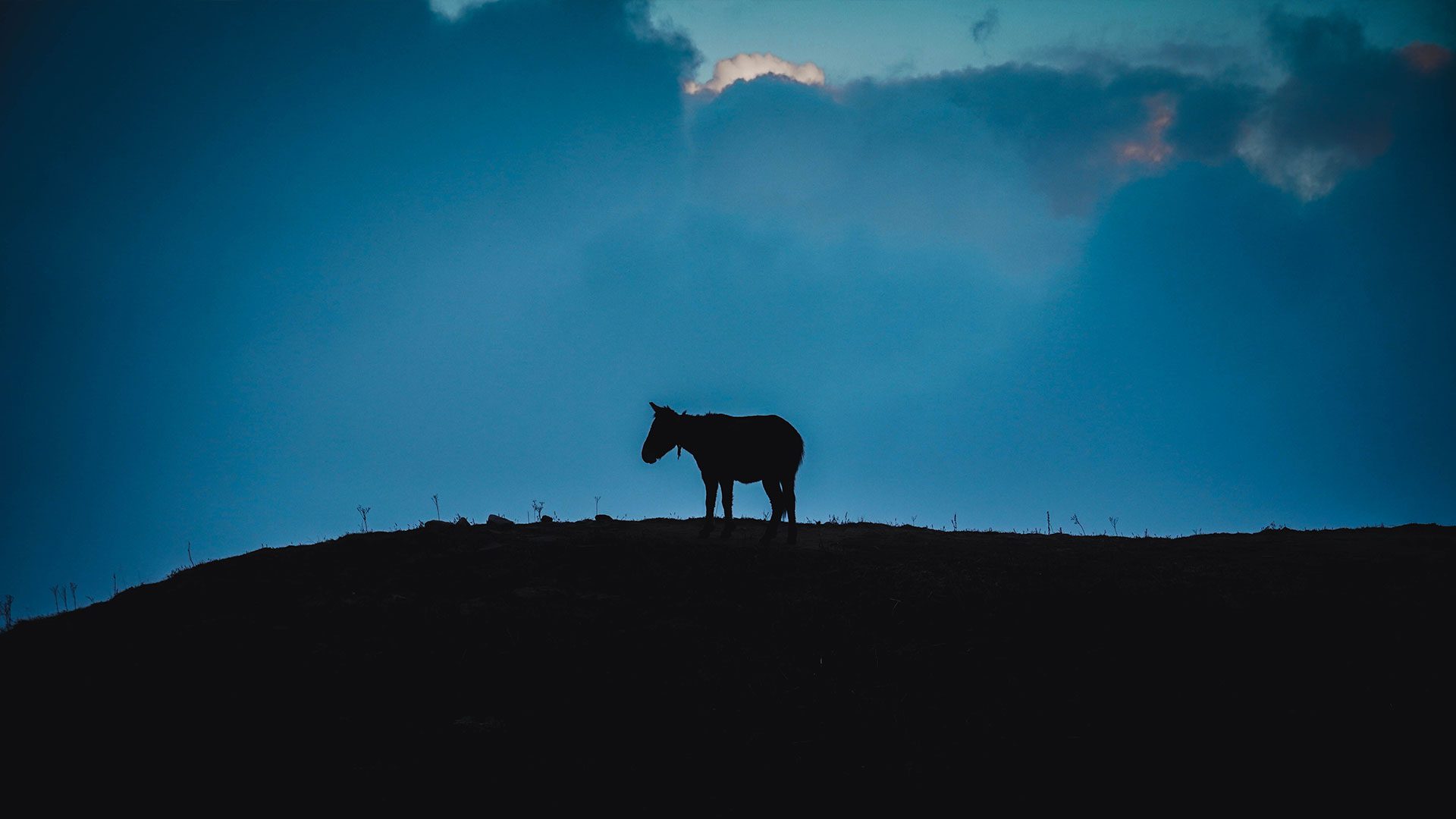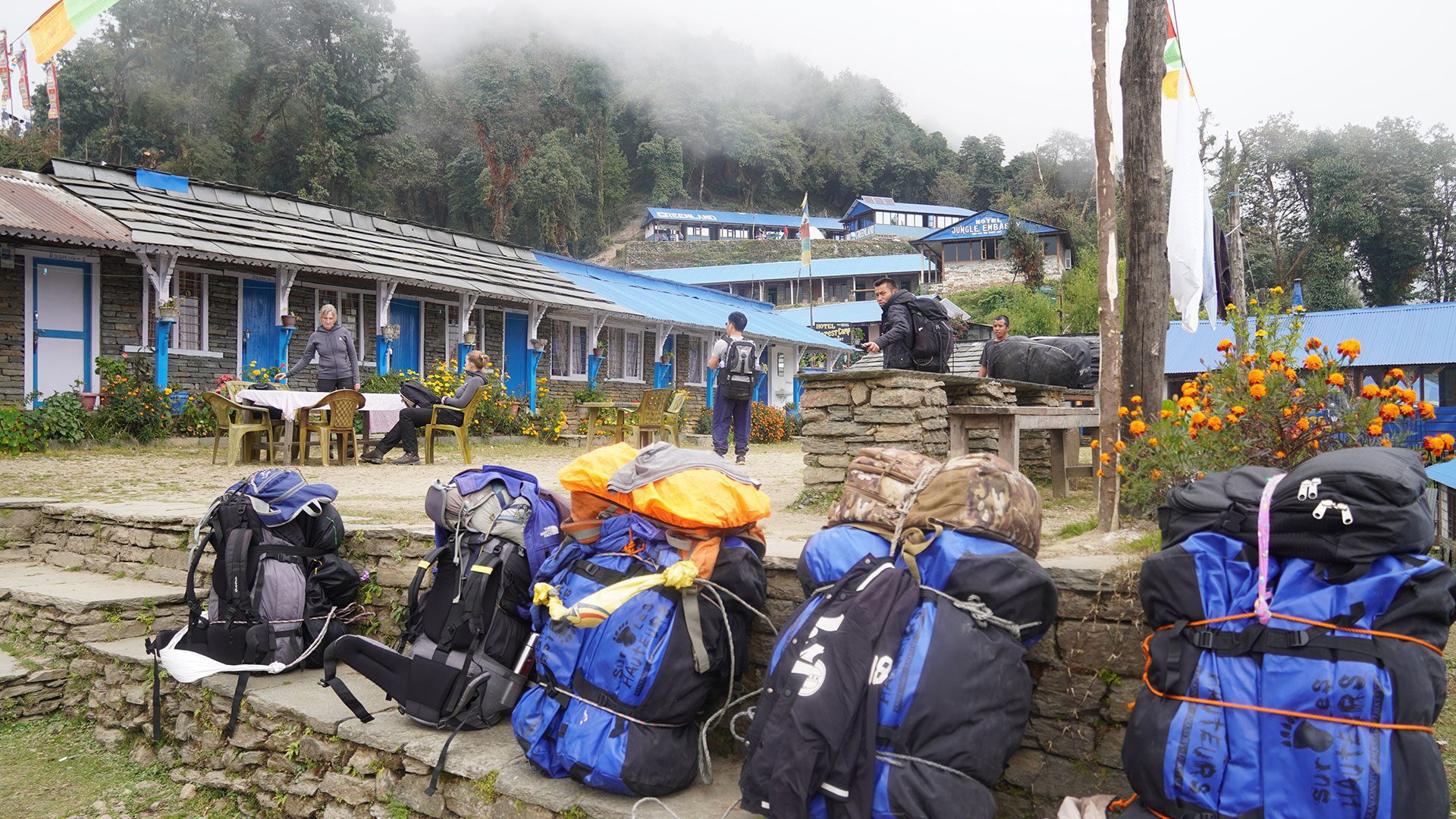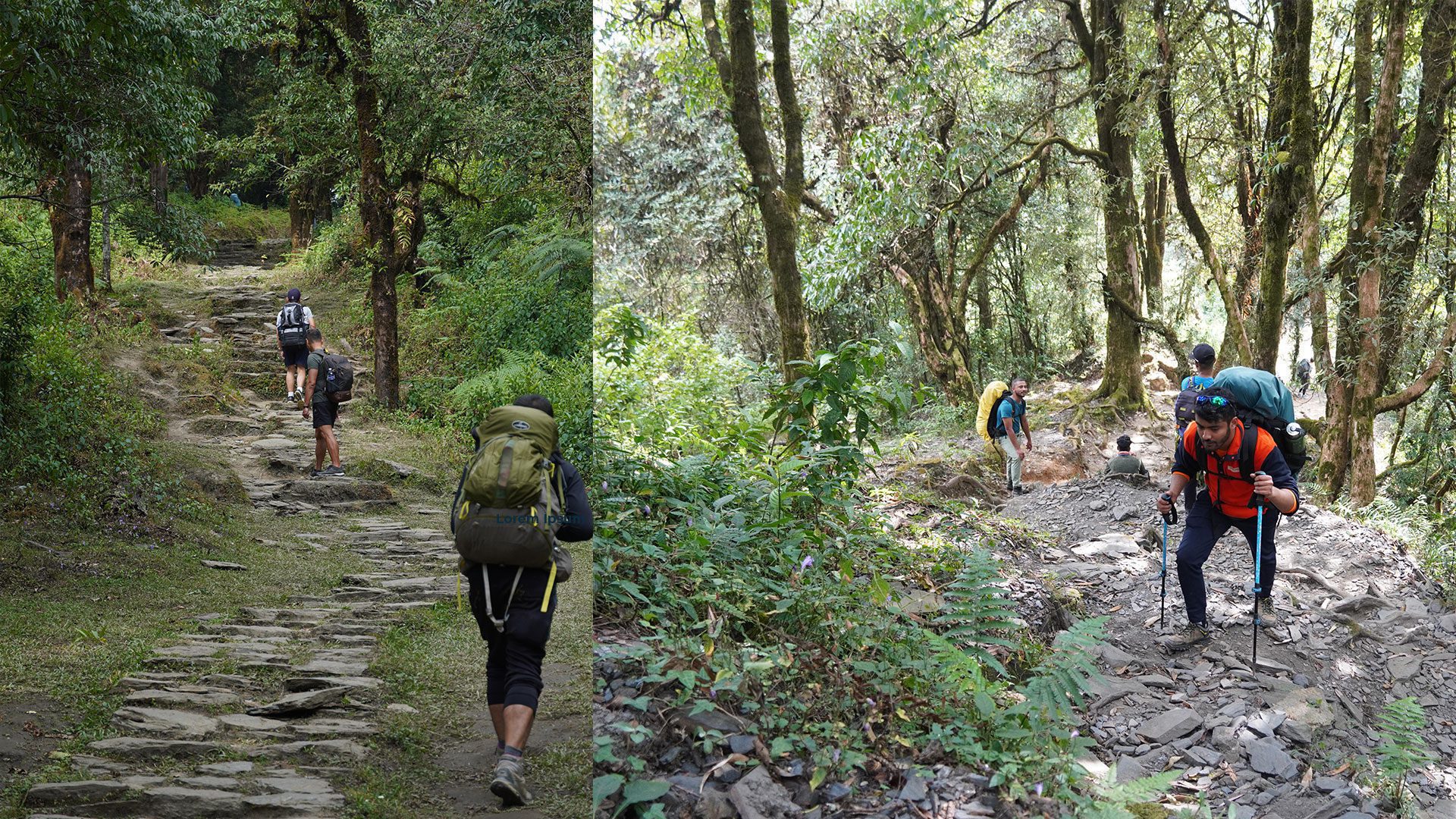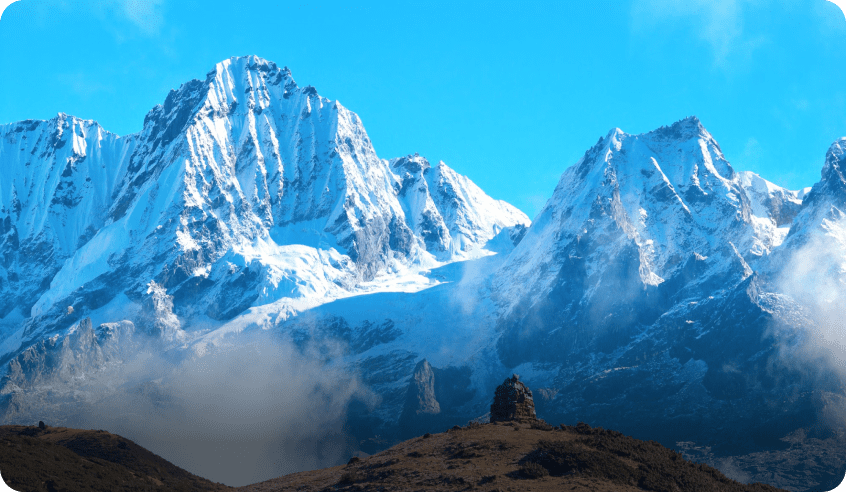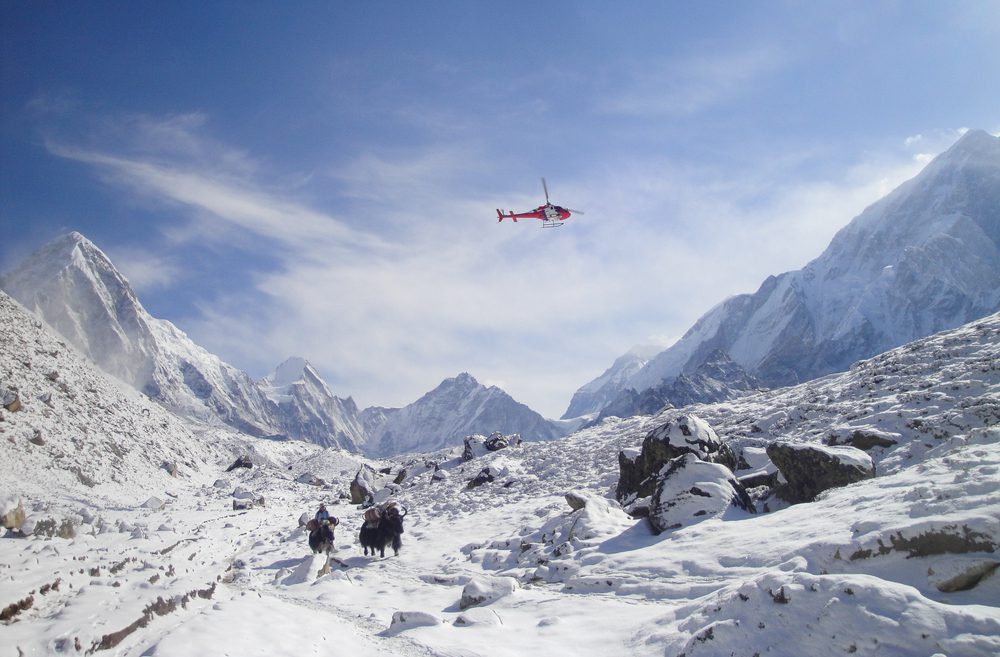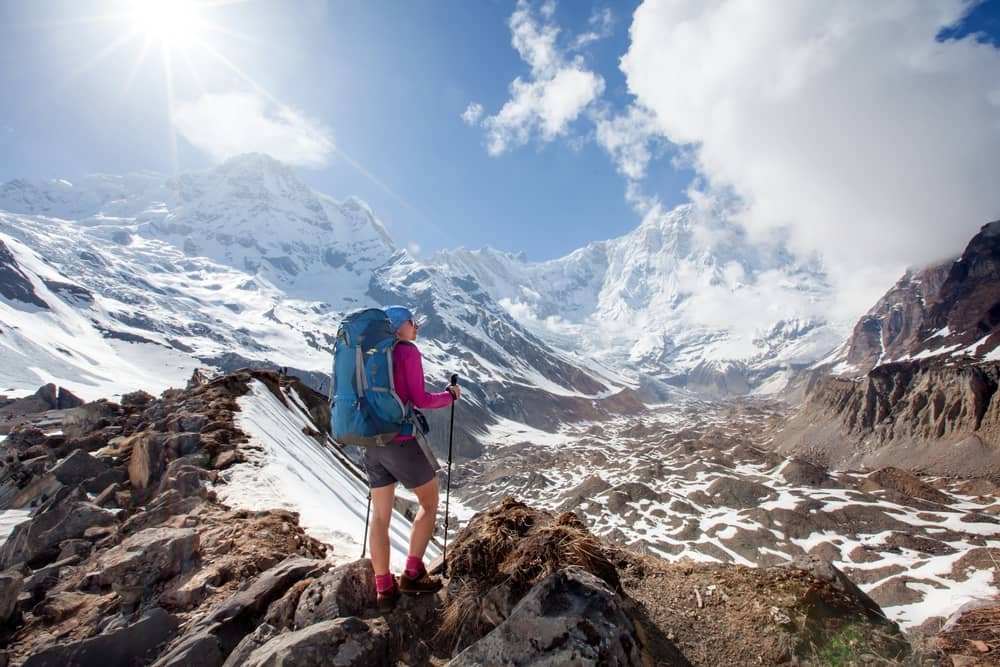5 Days Mardi Himal Trek
5(10)
Trip Facts
Mardi Himal Trek Overview
Mardi Himal Trek (5 Days) is one of the shortest treks in the Annapurna Region of Nepal. The Mardi Himal Trek for 5 Days scenic trek near Pokhara offers amazing views of Machhapuchhre also known as Fishtail, Annapurna South, and Hiunchuli. It is less crowded than other Annapurna treks which make it a best and great off-the-beaten-path experience to ever have for the short trek.
If you are a beginner tourist who want to explore the Nepal’s best Himalayas like Annapurna and other surrounding peaks in less that 6 days, it is the best options for you.
The journey to the Mardi Himal Trek (5 Days) officially starts with the scenic drive from Pokhara. As you go ahead, you will reach Kande village while enjoying the spectacular views of the Annapurna range, the nearby hills, and the farmlands. After some time of walking, you will slowly ascend through Forest Camp, Low Base Camp, and High Base Camp and reach Mardi Himal Viewpoint that is located at 4,500 meters/14,763 feet from where you can enjoy the views of peaks like Annapurna South, Machapuchare know as Fishtail.
These are the most popular place for sunrises and sunsets. As you are capturing those scenic photos, you will experience how amazing a nature could be. After enjoying such amazing and breathtaking views, you will return to Pokhara from Sidhing, where your trek officially ends. The best seasons for your visit to Mardi Himal are spring and autumn. These seasons offers you clear skies, stable weather and provide the perfect conditions with great pathways for the trek.
This Mardi Himal Trek 5-days is suitable for both professional, expert and beginner trekkers which will allow them to experience splendid views of the nature they are seeking. This trek might be short and sound simple but it will be worth it in the end.
So, what are you waiting for? Let’s start this amazing journey together with us and enjoy it to the fullest without any trouble.
Trip Highlight
- Stunning views of the Annapurna Range from Mardi Himal, including peaks such as Annapurna South, Hiunchuli, and the iconic Machapuchare (Fishtail), which is the most renowned feature throughout the trek.
- Mardi Himal Viewpoint at 4,500 meters (14,763 feet) is a well-liked location for sunrise and sunset views.
- Encounter diverse flora(rhododendron forests, oak forests, and alpine meadows) and fauna (wildlife like musk deer, Himalayan tahr, monkeys, a variety of bird species, and the Himalayan griffon).
- Several charming Nepali villages, including Forest Camp, Low Camp, High Camp, and Kande, experience the culture of local communities like Gurung and Magar.
- Experiencing diverse landscapes (forests, meadows, rocky terrain).
Itinerary
Your Journey, Step by Step
Trek from Forest Camp to Low Camp (3,050m) – 4-5 hours
You will start your trek from the Forest Camp. Along the way, you will walk through dense forests with moss-covered trees and alpine meadows. You might encounter Himalayan tahr and other bird species along the route. As you go ahead, you will get to see occasional glimpses of Machhapuchhre. Soon after, you will get to Low Camp, where even more breathtaking views await.
Stay overnight in Low Camp.
Trek from Low Camp to High Camp (3,580m) – 4-5 hours
The trek from Low Camp to High Camp will start today. As you climb higher, you will get to see more breathtaking views. You will trek above the tree line, which has a steep section with incredible views of Annapurna South and Hiunchuli. Along the way, you will walk along ridges with dramatic landscapes.
Then, after some time of trekking, you will arrive at High Camp, which is a great spot to relax and rest.
Stay overnight in High Camp.
Hike to Mardi Himal Viewpoint (4,500m) & Trek to low camp (3050) –6-7 hours
Today, you will hike to the most exciting and highest spot at 4500 m of the Mardi Himal Trek. You will be offered stunning up-close views of Machapuchare and the Annapurna Range. The trail is quite steep, but the stunning landscape and solitude at the base camp will make it worth your effort. After enjoying the incredible views and observing the best views of the sunrise and sunsets, you will descend to High Camp. After resting some time, you will descend to the Low Camp.
Stay overnight in Low Camp.
Trek from Sidhing Drive to Pokhara, 2-hour drive
On the last day, you will trek back to Siding, passing through small villages and woods, where you will board a jeep to return to Pokhara. With views of the terraced fields and undulating hills, the descent provides an alternative viewpoint of the terrain. Along the drive, your amazing Mardi Himal hike will come to an end as you return to Pokhara. If you want a more thrilling and adventurous experience you can try out the Para gliding or Bungee Jumping in Pokhara too.
Customize this trip with help from our local travel specialist that matches your Interests.
Customize This TripInclusions
What’s Covered in Your Adventure
- Pickup and drop by private vehicle.
- Meals breakfast/lunch/dinner
- Trekking Lodge accommodations during the trek.
- Mardi Himal trek entry permit.
- A highly experienced, helpful, knowledgeable, friendly, English-speaking, well-trained, government-licensed guide with all his Salary, Food, Drinks, Accommodation, Transport, and Insurance.
- Trekkers Information Management System (TIMS) permit.
- Pokhara to Kande and back to Pokhara by car.
- Comprehensive first aid kit box will be available.
- Oximeter to check your pulse, oxygen saturation, and heart rate twice a day (very helpful to check for signs of Altitude Mountain Sickness, or AMS). This will make sure that your trek is in the safest hands possible, no matter how experienced you are.
- Duffel bag for trekking if needed.
- Arrangements of Emergency Helicopter service, which will be paid by your Travel insurance company.
- Government taxes and official expenses.
- All accommodations and meals in Kathmandu, before and after the journey
- On-arrival visa fees at Tribhuvan International Airport- (15 days - $25-30, 30 days- $40-50 and 90 days- $100-110).
- Travel insurance that has to cover emergency high-altitude rescue and evacuation compulsory
- International airfare.
- Your personal expenses.
- All of the alcoholic and non-alcoholic cold and hot drinks you buy on the trek (along the way and in the Tea Houses at night).
- Personal expenses (shopping, snacks, boiled/bottled water, hot tea, coffee) and cold drinks, hot shower, alcohol, Wi-Fi, telephone calls, battery recharge fee, extra porters, etc
- Personal clothing and gear
- Tip to the guide, the porter. (Tipping is expected)
- All the costs and expenses that are not listed in "What is included in the Mardi Himal trek package?”
- One porter for two people is $ 140 and a maximum of 25kg.
- Note: We provide the flight ticket from Kathmandu to Pokhara, which takes 25 minutes. It will cost you USD 100 per person.
- Note: We provide a luxury tourist bus from Kathmandu to Pokhara, which takes 7-8 hours. It will cost you USD 15.
Maps
Navigate Your Journey

Good to Know
Your Journey, Step by Step
Food and Drinking Water
At most teahouses along the route of the Mardi Himal Trek, you will be offered simple yet energetic food options along with beverages. You will get local-style Nepali food such as Dal bhat, momo, chowmein, hot soups, vegetable curries, etc., and Western food such as pancakes, pasta, sandwiches, omelets, noodles etc. some snacks like chocolate, nuts, biscuits, energy bars are available in teahouses but it can be quite expensive. Coffee, ginger tea, black tea, hot chocolate, juices, soft drinks, and local drinks like cha and rakshi are the available beverages on the trekking routes.
As for the drinking water, there are plenty of rivers, streams, and water bottle refill stations along the way. However, water from rivers should always be filtered before consumption. Bottled water is available in teahouses, but it can be expensive. The best option for you is to boil the water in teahouses, which might take some time and occasionally cost a small amount of money. For water purification, you should always have a portable water filter, tablet, or UV sterilizer with you.
Staying hydrated is the most crucial part of the trek, so make sure you drink plenty of water to continue your trekking and take care of your body.
Accommodation on Mardi Himal Trek
You can stay in teahouses and lodges along the route. These provide basic facilities like food, water, and a place for the trekkers. The teahouse is made mostly of wood or mud and looks like a small hut. The lodge’s center dining area is heated by a big stove. Two or three beds are found in the majority of the rooms. They provide mattresses, pillows, and a little blanket. It is recommended to bring sleeping bags to adjust to cold temperatures at higher altitudes.
Electricity and Internet Service
Solar energy is the primary source of electricity along the Mardi Himal Trek, while limited hydroelectric units may also be used in certain places. But as you climb higher up the mountain, the power supply may become unstable. You may charge your electronics in hotels or tea houses, and there are more dependable power sources in the lower trek areas (such as Pokhara or lower villages). But as you go up, there is less and less electricity available. Since charging your devices is frequently done for an affordable cost, be ready to pay for it. Particularly in higher-altitude regions, some tea shops may impose extra charges for the use of power.
Internet service is also available at teahouses, but as you go up higher in altitude, the service becomes slow and unstable. It is important to know that the availability of internet and electricity is possible, but you cannot expect a proper, stable, unlimited, and fast network during the trek as the areas are especially remote.
Safety and Security in the Mardi Himal Trek
The Mardi Himal Trek is quite easy and is suitable for beginners to set out on their unforgettable journey. But at some higher altitudes, like Mardi Himal Base Camp at 4,500 meters (14,763 feet), there is a risk of altitude sickness. To avoid altitude sickness and fatigue, you should acclimate to adjust your body to higher altitudes and properly hydrate yourself daily. You should also take a registered and experienced guide who knows the trekking area well. There is a need for proper equipment while hiking. So, you have to follow proper safety precautions before setting out on your trek
Group Size
The group size for the Mardi Himal trek usually ranges from 2 to 10 people. The size may change if you are walking with a guide or agency. However, you can go for a solo hike if you want to. The trek is still easy and fun regardless of the size of the group. So, do not forget to create memories while you are there.
Difficulty in Mardi Himal Trek
The trek to Mardi Himal is rather easy than difficult, but on some trails, you have to be careful with narrow valleys and varying terrain. Up to Upper View Point, the trail is entirely uphill, so walking there can be difficult for you. Some parts have rocky trails and steep ascents, especially those at higher elevations like Base Camp, High Camp, and Low Camp. Due to the trek’s lengthy, steep climbs, participants must have proper physical fitness. The trail can be quite slippery and difficult in the snowy and monsoon season.
FAQs
Your Questions, Answered
What is the highest point on the trek?
The maximum altitude of the Mardi Himal Trek is 4,500 m (14,763 ft), which is the elevation of the Mardi Himal Base Camp.
What is the difficulty level of the Mardi Himal Base Camp?
The Mardi Himal Trek is considered easy, but it can be quite challenging in steep ascents, altitude gain, weather conditions, and the physical endurance during the trek.
When is the best time to do the Mardi Himal base camp?
The best seasons for the Mardi Himal Trek are spring (March to May) and autumn (September to November), which offer stunning scenery, clear skies,and stable weather.
Do I need a permit for the trek?
Yes, you need two permits: Annapurna Conservation Area Permit (ACAP) and the Trekkers’ Information Management System (TIMS) Card which you can find in Nepal Tourism Board and the Trekking Agencies Association of Nepal.
Do I need a guide?
It is not mandatory for a guide to Mardi Himal Trek but it is recommended to have a skilled and knowledgeable guide to avoid difficulties.
Can I trek solo trekking without a guide?
It is not mandatory for a guide to Mardi Himal Trek but it is recommended to have a skilled and knowledgeable guide to avoid difficulties.
Is there a risk of altitude sickness in the Mardi Himal Base Camp?
Yes, there is a chance of altitude sickness particularly at higher elevation at Mardi Himal Base Camp (4,500 m or 14,763 ft). But it can be avoided if you take proper precautions during the trek.
How long do I trek each day?
The average walking distance for the Mardi Himal Trek is 4-7 hours, which depends upon the itinerary.
Can I trek Mardi Himal during the monsoon season?
It is not suitable for to trek the Mardi Himal during monsoon season as the trail can be slippery due to heavy rain and there is high risk of landslides which make it difficult to move ahead.
Is the Mardi Himal Trek suitable for beginners?
The Mardi Himal Trek is suitable for beginners with some physical fitness and an adventurous spirit.
Do we need oxygen to climb Mardi Himal?
No, you do not need oxygen to climb Mardi Himal to reach high altitudes.
Is the Mardi Himal Trek crowded?
The Mardi Himal trek is comparatively less crowded than other well-known treks like Annapurna Base Camp which gives you the peaceful trekking experience.
What wildlife can I see on the Mardi Himal Trek?
You can see the wildlife such as musk deer, Himalayan tahr, monkeys, a variety of bird species, and the Himalayan griffon on the Mardi Himal Trek.
How long is the Mardi Himal Trek?
Depending on your route and the number of stops you make along the way, the Mardi Himal Trek can be anywhere from 60 to 70 kilometers (37 to 43 miles) long.
Can I rent trekking gear?
Yes, you can rent gear such as sleeping bags, trekking poles, and jackets in Pokhara or Kathmandu.
Is Wi-Fi available during the trek?
Yes, WiFi is available in the lower-altitude villages like Kande and Pothana. But as you ascend to higher altitude places like Forest Camp, it may not be available.
What if I lose my permit during the trek?
If you lose your permit, you can report the loss, get a replacement permit, keep a record of your documents, and can continue your trek without too much trouble.
Travel Insurance
It is highly recommended to have travel insurance while trekking Mardi Himal.
Your insurance should cover:
- Emergency medical coverage: Your emergency medical coverage should cover all your medical expenses for altitude sickness when ascending to higher altitudes above 2,500 meters.
- Evacuation: If you suffer from any serious injury or medical emergency, you may need an emergency evacuation by helicopter from a remote location to a hospital in Pokhara or Kathmandu.
- Protection for trip interruptions: If you leave your trip for serious illness or condition in the middle of your trek, you should make short protection insurance for it.
- Lost gear: Coverage for the loss of your personal belongings like mobile phone,gears etc.
- High-altitude trekking: Make sure you have insurance for the high-altitude Trekking to Mardi Himal Base Camp is at 4500m (14,763 ft).
Trekking Equipment
Equipment is the major thing to consider during a trek. Here is some of the trekking equipment required for the Mardi Himal Trek:
General
- Passport: With extra copies and passport-sized photos for permits.
- Trekking Permits: TIMS (Trekker’s Information Management System) card and Annapurna Conservation Area Permit (ACAP).
- Sleeping Bag (at least -15°C (5°F) for cold nights)
- Cash: Nepali rupees for tips, snacks, and small purchases.
- Duffel Bag: Used for your primary luggage, which porters typically carry.
- Backpack: main trekking backpack (for carrying foods and sleeping bags) and day backpack (for short treks with needed essentials like water, camera, extra layers, and snacks)
Upper body
- Sunglasses (with UV protection)
- Sun hats, and woolen hats.
- Scarves/ Buff
Torso
- Base layers
- fleece or down jackets
- insulated jackets
- sweaters
- waterproof outer layers
Lower Body
- Trekking Pants
- Base Layer: Thermal bottoms for added warmth in cold weather.
- Hiking Shorts: For warmer sections of the trek.
- Comfortable Pants: For relaxing in teahouses.
- Waterproof Pants: Shields against rain and snow.
Hands
- Lightweight gloves (for warmth)
- Insulated and waterproof gloves (for colder weather)
Footwears
- Woolen Socks
- Sturdy trekking boots (waterproof, ankle support)
- Camp shoes or sandals (for resting)
- Flip-flops or sandals
Undergarments
- Moisture-Wicking Underwear
- Sport bra for women
- Thermal or Base Layer Bottoms
Medication and First Aid Box
- Altitude Sickness Medications like Diamox.
- Sunscreen & Lip Balm with high SPF
- Bandages
- Pain Relievers like Ibuprofen, Paracetamol
- Cough Syrup
- Antibacterial Cream eg. Neosporin
- Thermometer
Other Essentials
- Hand sanitizer
- Water bottles (carry 3-4 liters)
- Toiletries like toothbrushes, wet wipes, soap etc
- Flashlights and Headlamp (with extra batteries)
- Towel
Optional
- Camera (for capturing the scenery with extra batteries)
- Trekking poles
- Snacks like chocolate, energy bars, nuts
- Power bank (for charging devices)
- Dry bags (for keeping things dry)
- Notebook or journal
- Earplugs and Eye mask
What is the best time to visit?
The best time to visit is during the dry season, from April to October, when the weather is pleasant and ideal for outdoor activities.
Booking Policy
Our goal is to give our guests a seamless and adaptable booking experience.
The specifics of our Mardi Himal Trek reservation policy are listed be:
1. Advance Payment & Booking Confirmation
- A 30% down payment of the total trip cost is required to reserve your spot.
- The remaining amount can be paid when you get to Kathmandu.
- Another option is to pay the full amount up front.
- To complete the reservation, you must send:
- The reservation fee
- A digital version of your passport
- Extra information that is needed, such as an emergency contact or travel insurance information.
2. Payment Methods: We offer a range of payment options for your convenience:
- Online Payment: To make a safe online payment, use the payment gateway on our website.
- Debit/Credit Cards: Visa, MasterCard, and other payment methods are accepted (a 4% bank service charge applies). Send funds directly to our bank account via bank or wire transfer (transaction fee).
- Cash or Check: If you are in Kathmandu, you can choose to pay with cash or a check.Depending on the circumstances, date adjustments may be contingent upon availability and additional fees.
4. Travel Insurance Requirement : Every trekker has to have full-coverage travel insurance that covers evacuation, high-altitude medical emergencies, trip cancellations, and delays.
5. Last-Minute Booking: Although it is possible to schedule the trek at the last minute (up to 48 hours prior to departure), it is strongly advised that you do it in advance to ensure availability during busy months like September through November.
Cancellation Policy
1. Cancellation by the Guest
- 30 days before your departure: Full payment, excluding the cost of the bank transfer.
- 30 % of the total trip cost is reimbursed ten days before departure.
- There will be a 50% refund if you cancel five days or fewer before your trip.
- If you need to postpone or cancel your trip at the last minute, there won’t be any extra charges.
- There will be no reimbursement for any reason (such as personal illness, injury, or early return) after the trek has started.
2. Cancellation by the Company: You have the following options if the trek is canceled due to unanticipated events, natural disasters, or political unrest:
- Get a complete reimbursement of the trip price.
- Reschedule your trek to a later date.
3. Cancellations Due to Weather or Flight Delays
- We will try to reschedule your trip at no extra cost. If necessary, your trekking area will be modified.
- If you decide to cancel, you will receive a full refund of 30% of the total cost of your trip, excluding service fees for transportation, hotel reservations, and permits.
4. No-Show Policy
- If the guest unexpectedly fails to show up on their satated departure date, there will be no refund.
5. Travel Insurance Requirement:
- It is strongly advised to have comprehensive travel insurance that covers medical emergencies, evacuation costs, and trip cancellations.
What is the starting point of the trek?
The starting point of the trek is Kande, located about 30 kilometers (1.5-hour drive) from Pokhara.
What type of accommodation is available in the Mardi Himal base camp?
Along the route, basic tea houses with shared rooms and common bathrooms are available.
View Our Similar Packages
Discover our top tours, loved by thousands of travelers annually. Choose the adventure that inspires you and embark on a journey tailored to your desires.







